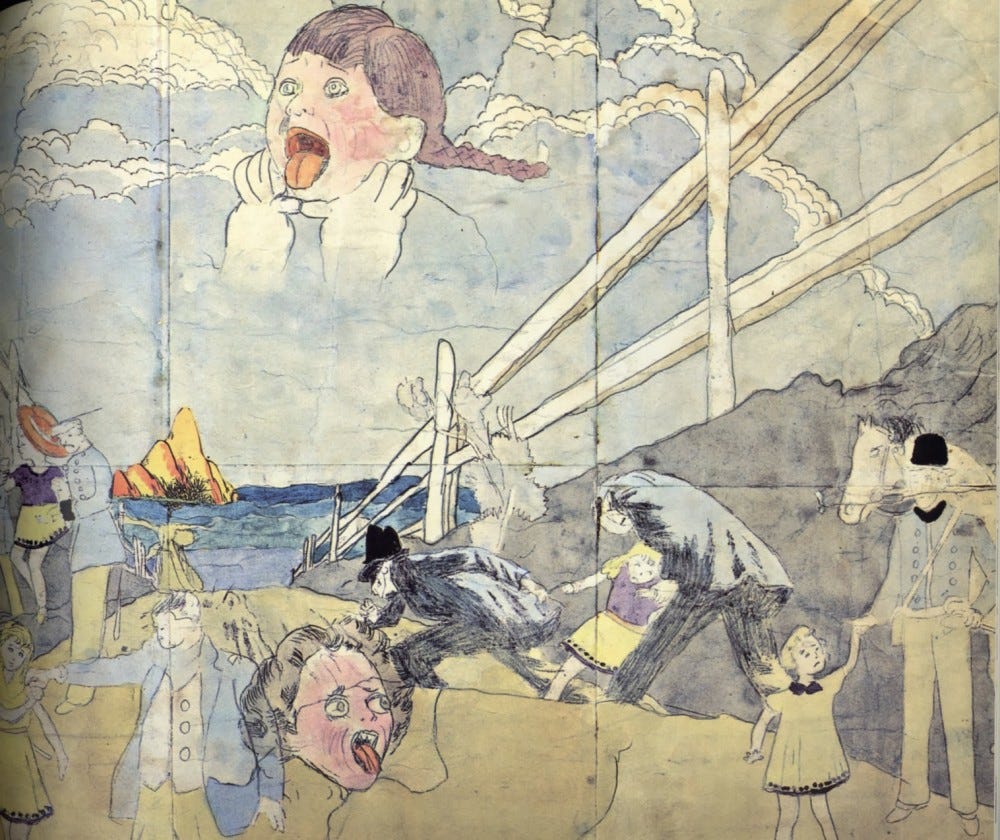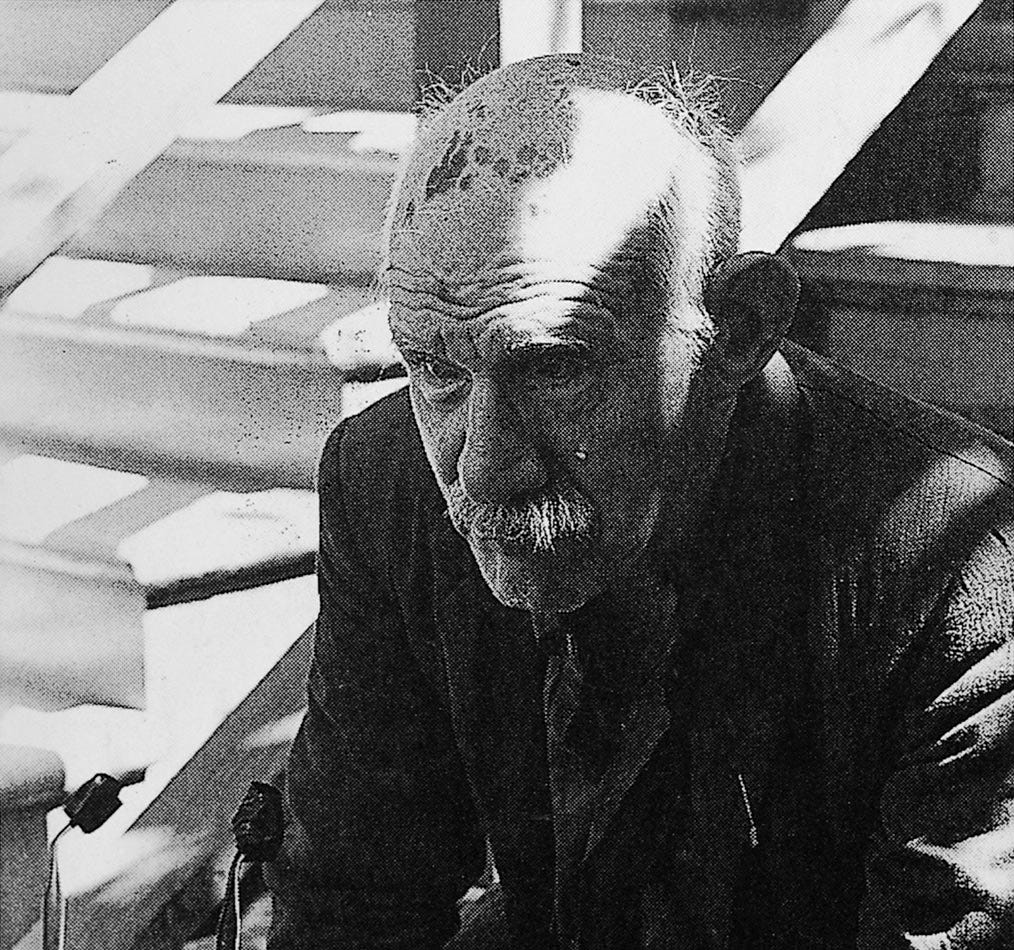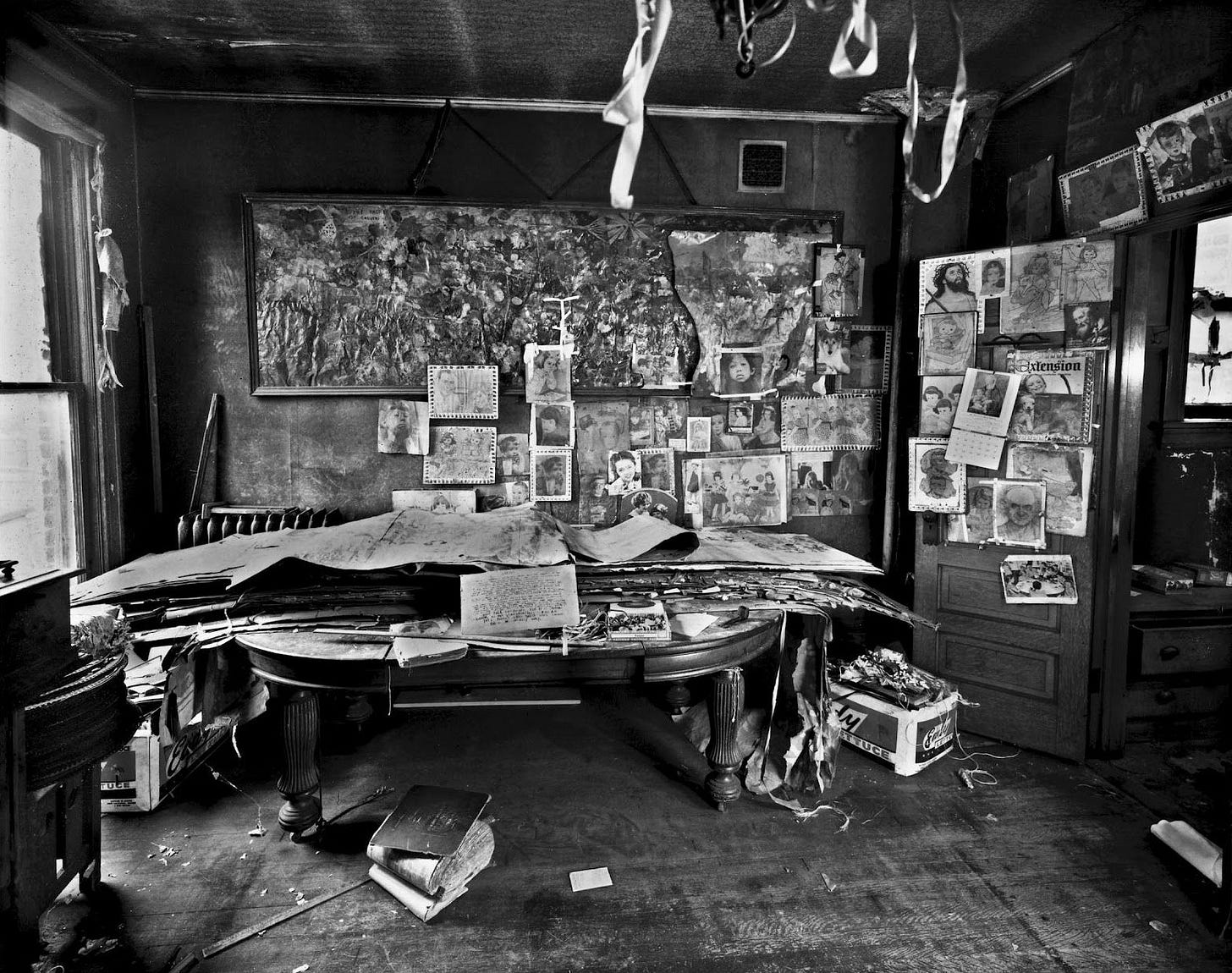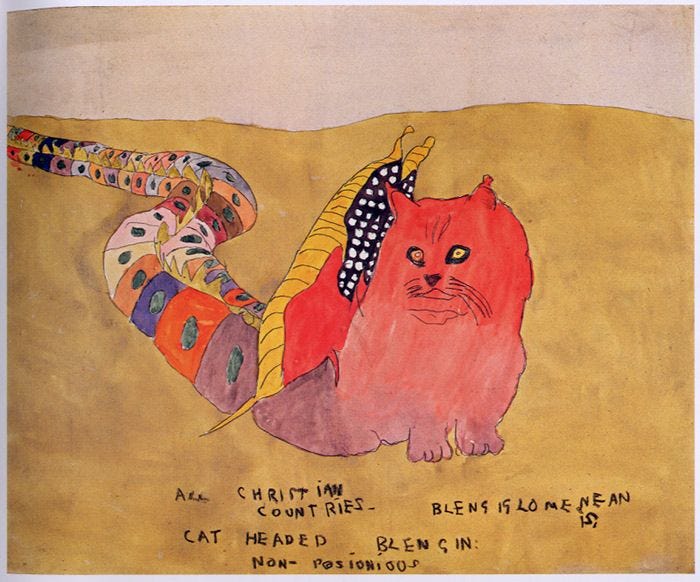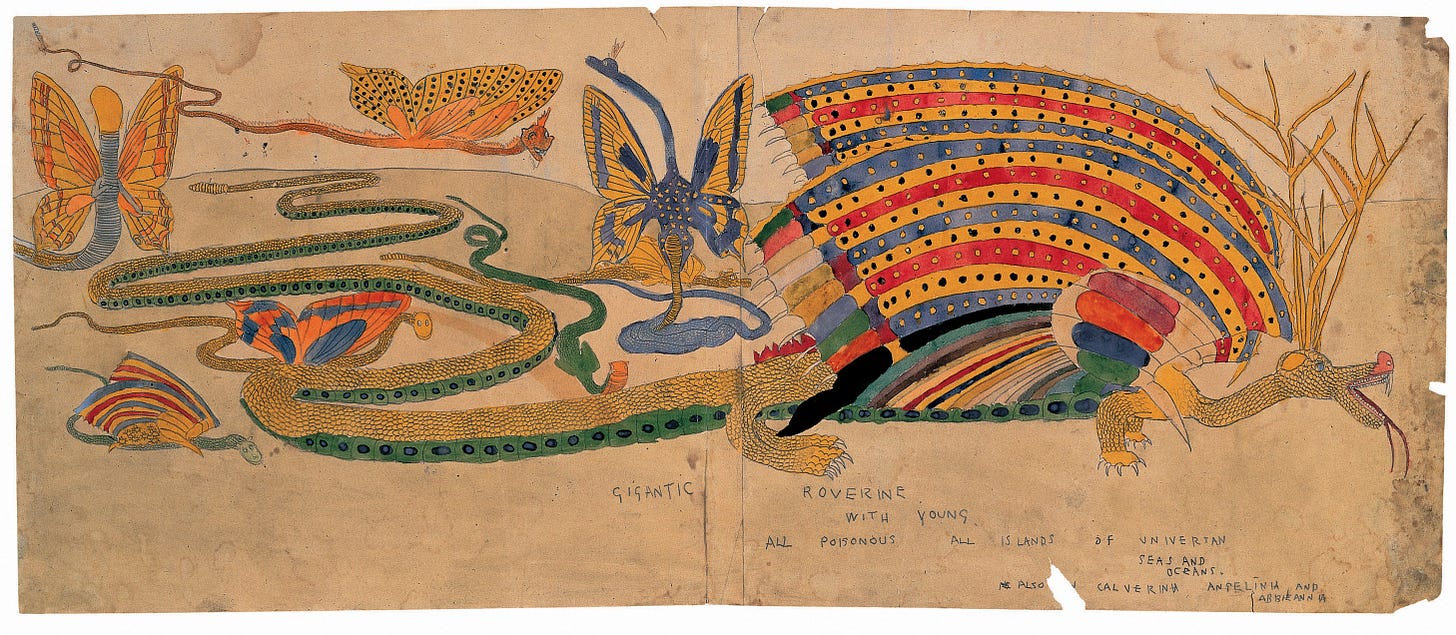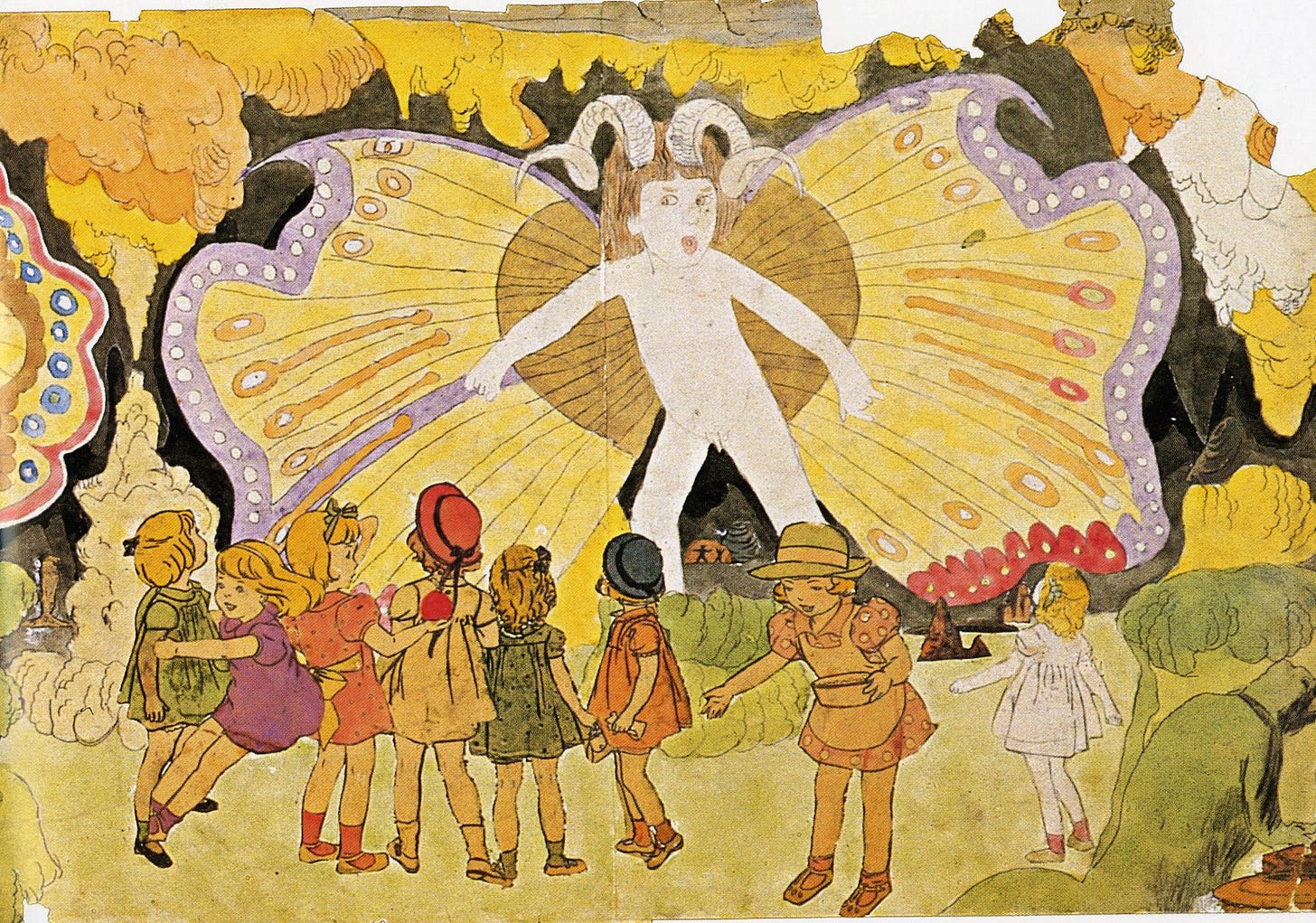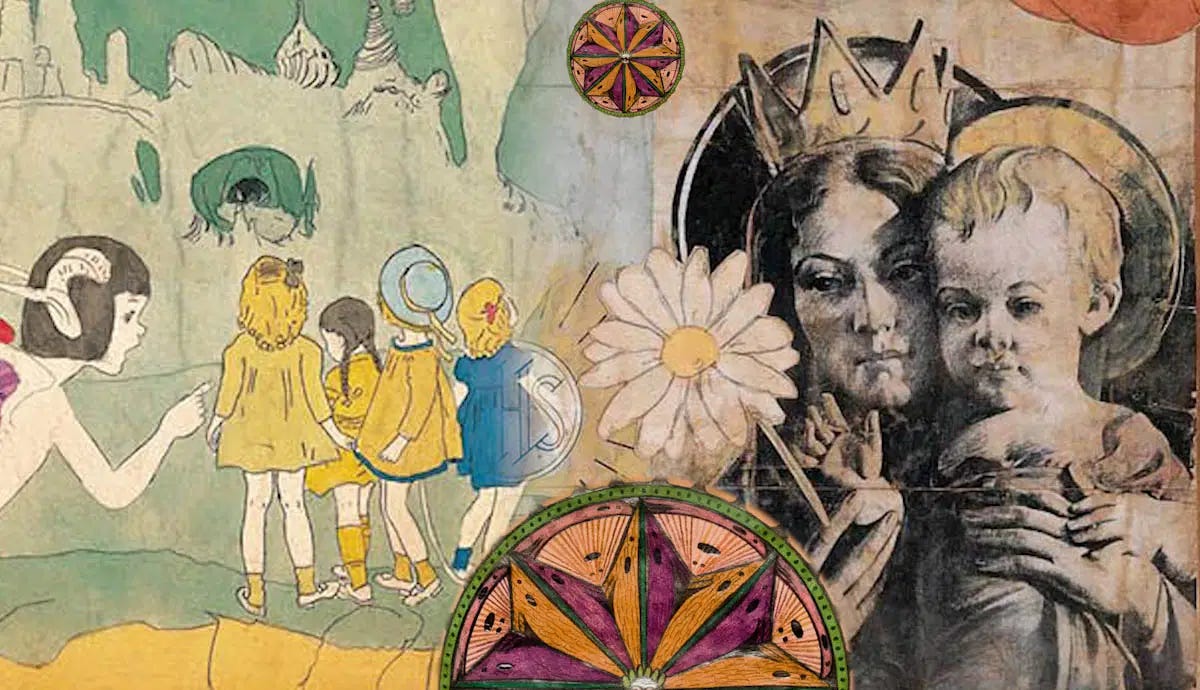Outsider art is created by self-taught artists who work outside the traditional art world, without formal training or often recognition during their lifetimes. These artists tend to live on the fringes of society, including those with mental illnesses, reclusive lifestyles, or who are institutionalized. What makes the best outsider art stand out is its raw, unfiltered expression. It is deeply personal and unique, driven by the artist’s untrained inner world rather than mainstream artistic trends.
Henry Darger (1892–1973) is one of the most well-known outsider artists. His massive body of work, discovered only after his death, includes the 15,000-page illustrated novel The Story of the Vivian Girls, in What is Known as the Realms of the Unreal. His visionary art, filled with surreal, childlike, and often violent imagery, continues to fascinate audiences today.
Born in Chicago, Darger’s early life was filled with struggle and abuse. After his mother died when he was four, he was sent to an orphanage and later institutionalized at the Illinois Asylum for Feeble-Minded Children—a place notorious for abuse. He attempted to escape three times, once being forced to run back while tied to a horse. Eventually, he managed to escape for good and spent the rest of his life working as a janitor in Chicago, living in near-total isolation. He barely spoke to anyone, had one known friend in his life, and was often seen rummaging through trash. Many assumed he was homeless.
The Stunning Discovery of His Work
Darger’s secret world was only revealed after his death in 1973, when his landlord, Nathan Lerner—a photographer and designer—discovered the treasure trove of art and writing in his tiny apartment. Among the findings:
Over 300 massive paintings and drawings, some so large they had to be folded to fit within his apartment.
His 15,000-page novel In the Realms of the Unreal, one of the longest works of fiction ever written.
A 10,000-page sequel and another unfinished manuscript.
Hundreds of tracings, collages, and watercolors.
Several journals, including a decades-long weather diary.
Darger’s Unique Artistic Style
Darger’s artwork blends watercolor painting, collage, and tracing. His large-scale, dreamlike compositions often feature epic battle scenes, vast landscapes, and childlike figures. Because he was self-taught, he developed his own methods—tracing images from newspapers, magazines, coloring books, and comics, then repurposing them into surreal, symmetrical designs. His bright, expressive watercolors added a cinematic quality to his work.
The World of In the Realms of the Unreal
Darger’s epic novel tells the story of the Vivian Girls, young princesses leading a rebellion against the evil Glandelinians, a group of oppressive adult rulers. His illustrations bring this chaotic, otherworldly struggle to life, shifting between peaceful, idyllic scenes and disturbingly violent battles and scenes of torture. One of the most debated aspects of his work is his depiction of young girls—often drawn with male genitalia—raising questions about his psychology, personal identity, and artistic intent.
Darger had a fixation on childhood and children, particularly young girls, likely influenced by his traumatic past as an orphan and asylum patient. He saw girls as stronger than boys, often portraying them as brave warriors fighting against cruel oppressors. His art reflects his deep desire to protect childhood innocence.
Since his work was discovered, Darger has become a major figure in outsider art, inspiring books, films, museum exhibits, and critical studies. His mix of childlike innocence and shocking brutality continues to intrigue scholars and artists, raising questions about trauma, mental illness, and what separates outsider art from mainstream art.
Art as an Innate Human Psychological Need
Many outsider artists, like Henry Darger, created their work in complete secrecy, never intending for anyone else to see it. This compulsion to create, hidden away from the world, reveals something profound about human nature—art isn’t just a social or commercial endeavor but an innate psychological drive.
Below is an excellent short PBS video about Darger and his art:




